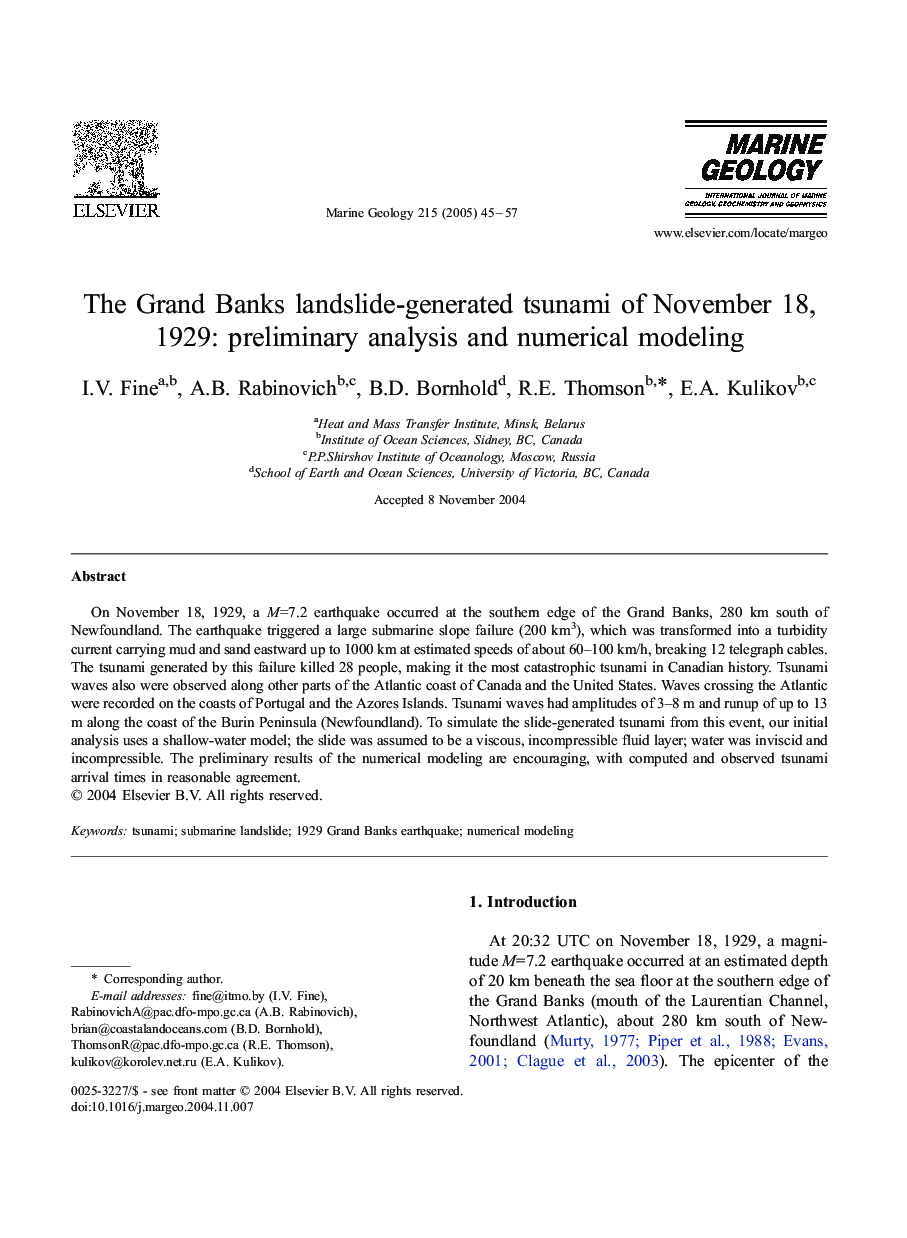| کد مقاله | کد نشریه | سال انتشار | مقاله انگلیسی | نسخه تمام متن |
|---|---|---|---|---|
| 9532562 | 1639229 | 2005 | 13 صفحه PDF | دانلود رایگان |
عنوان انگلیسی مقاله ISI
The Grand Banks landslide-generated tsunami of November 18, 1929: preliminary analysis and numerical modeling
دانلود مقاله + سفارش ترجمه
دانلود مقاله ISI انگلیسی
رایگان برای ایرانیان
موضوعات مرتبط
مهندسی و علوم پایه
علوم زمین و سیارات
ژئوشیمی و پترولوژی
پیش نمایش صفحه اول مقاله

چکیده انگلیسی
On November 18, 1929, a M=7.2 earthquake occurred at the southern edge of the Grand Banks, 280 km south of Newfoundland. The earthquake triggered a large submarine slope failure (200 km3), which was transformed into a turbidity current carrying mud and sand eastward up to 1000 km at estimated speeds of about 60-100 km/h, breaking 12 telegraph cables. The tsunami generated by this failure killed 28 people, making it the most catastrophic tsunami in Canadian history. Tsunami waves also were observed along other parts of the Atlantic coast of Canada and the United States. Waves crossing the Atlantic were recorded on the coasts of Portugal and the Azores Islands. Tsunami waves had amplitudes of 3-8 m and runup of up to 13 m along the coast of the Burin Peninsula (Newfoundland). To simulate the slide-generated tsunami from this event, our initial analysis uses a shallow-water model; the slide was assumed to be a viscous, incompressible fluid layer; water was inviscid and incompressible. The preliminary results of the numerical modeling are encouraging, with computed and observed tsunami arrival times in reasonable agreement.
ناشر
Database: Elsevier - ScienceDirect (ساینس دایرکت)
Journal: Marine Geology - Volume 215, Issues 1â2, 28 February 2005, Pages 45-57
Journal: Marine Geology - Volume 215, Issues 1â2, 28 February 2005, Pages 45-57
نویسندگان
I.V. Fine, A.B. Rabinovich, B.D. Bornhold, R.E. Thomson, E.A. Kulikov,